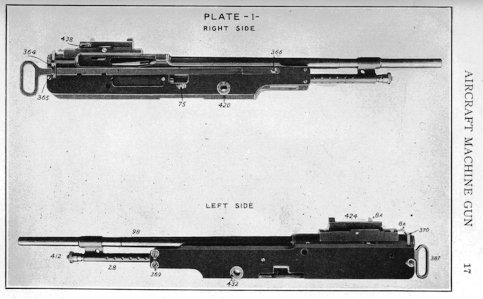Fokker
Today we meet a special figure in early air warfare. The University of Houston's College of Engineering presents this series about the machines that make our civilization run, and the people whose ingenuity created them.
The first military airplanes to take to the air in WW-I had just one purpose -- scouting enemy positions and movements. Still, it was no time at all before the pilots of these planes looked for ways to shoot each other out of the sky. The first kills were made with pistols and rifles fired off to the side. Then movable machine guns were operated by backseat observers. But it was soon apparent that forward-firing machine guns would be a lot more effective.
The British mounted the first forward-firing guns on the upper wing, where they could fire over the propeller blade. But they were hard to aim and almost impossible to fix when they jammed in flight. The French then put metal deflectors on the propeller so the pilot could fire straight through the blades, with a few bullets glancing off them. That worked, but it eventually damaged the crankshaft.
As the story is told, one of these French planes was captured by the Germans, who handed it over to the handsome young airplane designer, Anthony Fokker, on a Tuesday evening. That Friday, Fokker came back with the first interrupter device -- a mechanism, connected to the engine, that turned the gun off each time a propeller blade passed through the line of fire.
Fokker's device worked well enough in a ground test, but the German officers wanted a combat demonstration. They wrapped Fokker -- a Dutch civilian -- in a German uniform and bundled him off to the front.
Fokker took off in a monoplane of his own design and soon enough spotted a two-seater Allied scout below him. He put his plane in an attack dive and located the scout in his sights. Then the reality of the situation registered on Fokker -- he was about to kill two people. He turned sick to his stomach and flew back to the aerodrome without firing a shot.
Fokker vowed not to fly in combat again and returned to his factory. From then on he provided Germany with the advanced airplanes that killed most of the thousands of Allied pilots who died during the rest of the war. They called his interrupter mechanism the "Fokker Scourge." Just after the war, his civilian airplane designs were widely used in the United States. My father -- who'd been an Allied pilot -- met him here and remarked what a nice fellow he was.
I'm John Lienhard, at the University of Houston, where we're interested in the way inventive minds work.
(Theme music)
Fokker, A. H. G., and Gould, B., Flying Dutchman: The Life of Anthony Fokker. New York: Arno Press, 1972, c 1931.
This episode has been substantially revised as Episode 1369.

A page from the 1917 Marlin Machine Gun Manual.
By now the Allies also had interrupter machine guns.